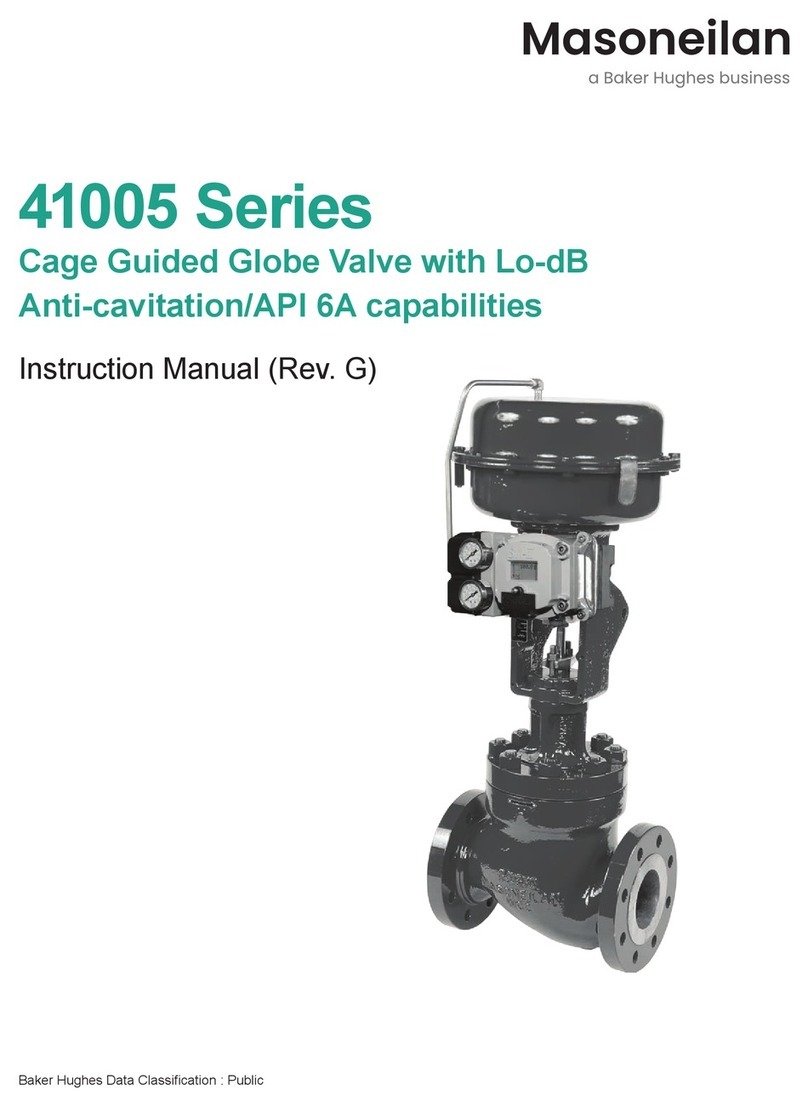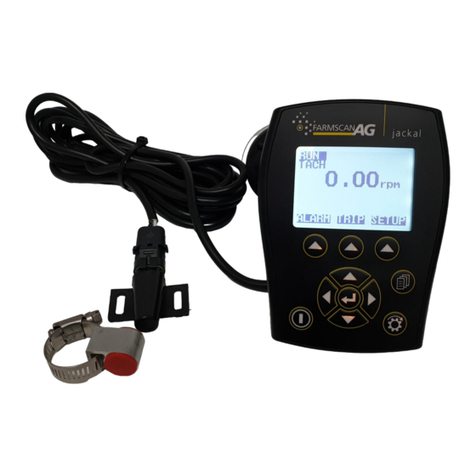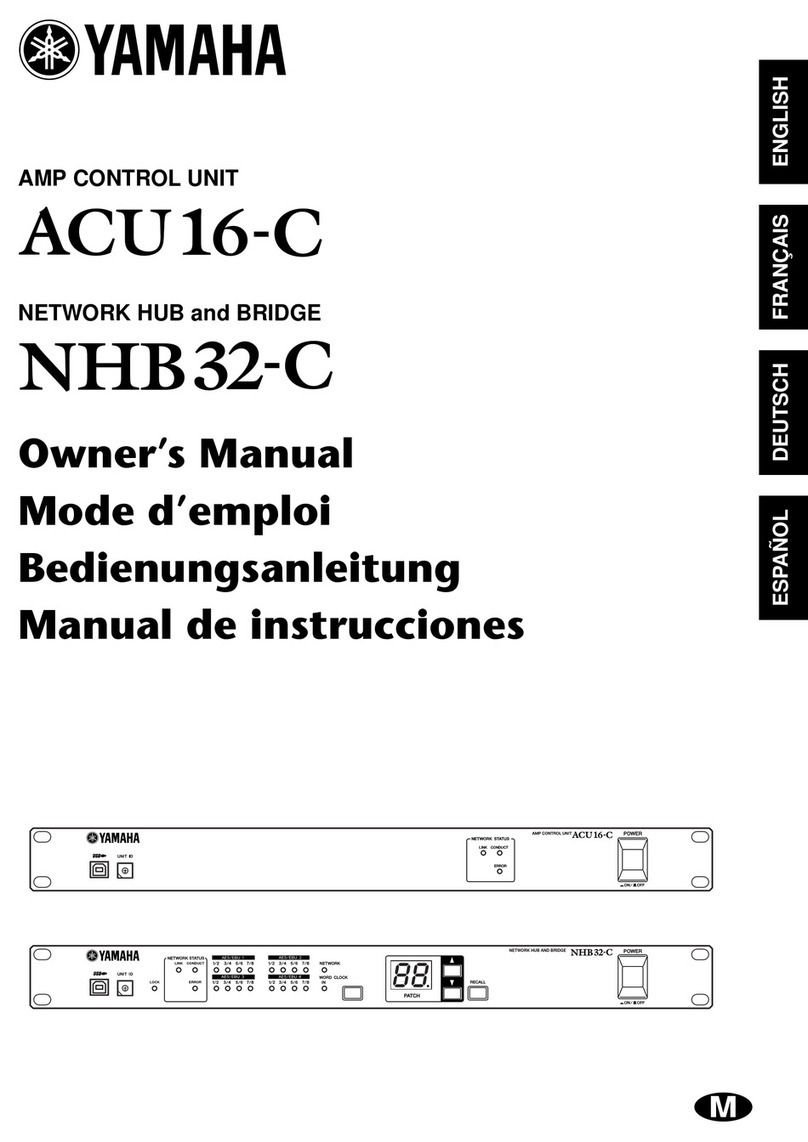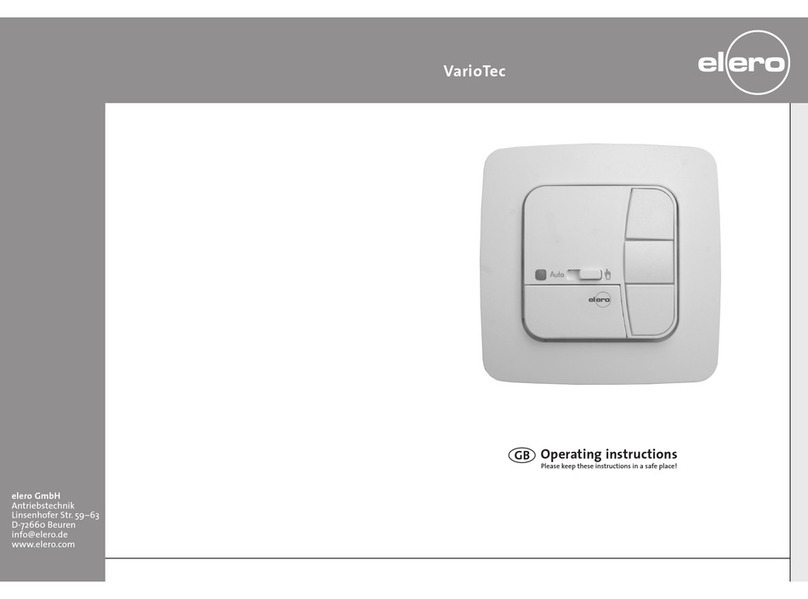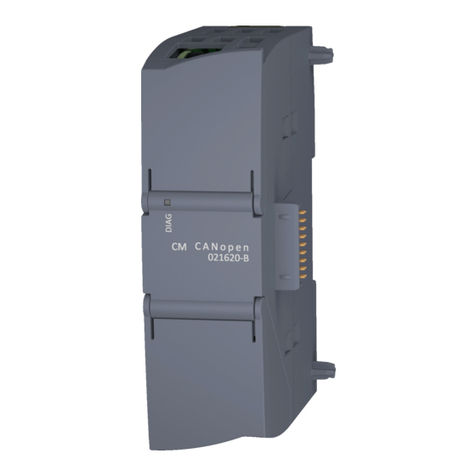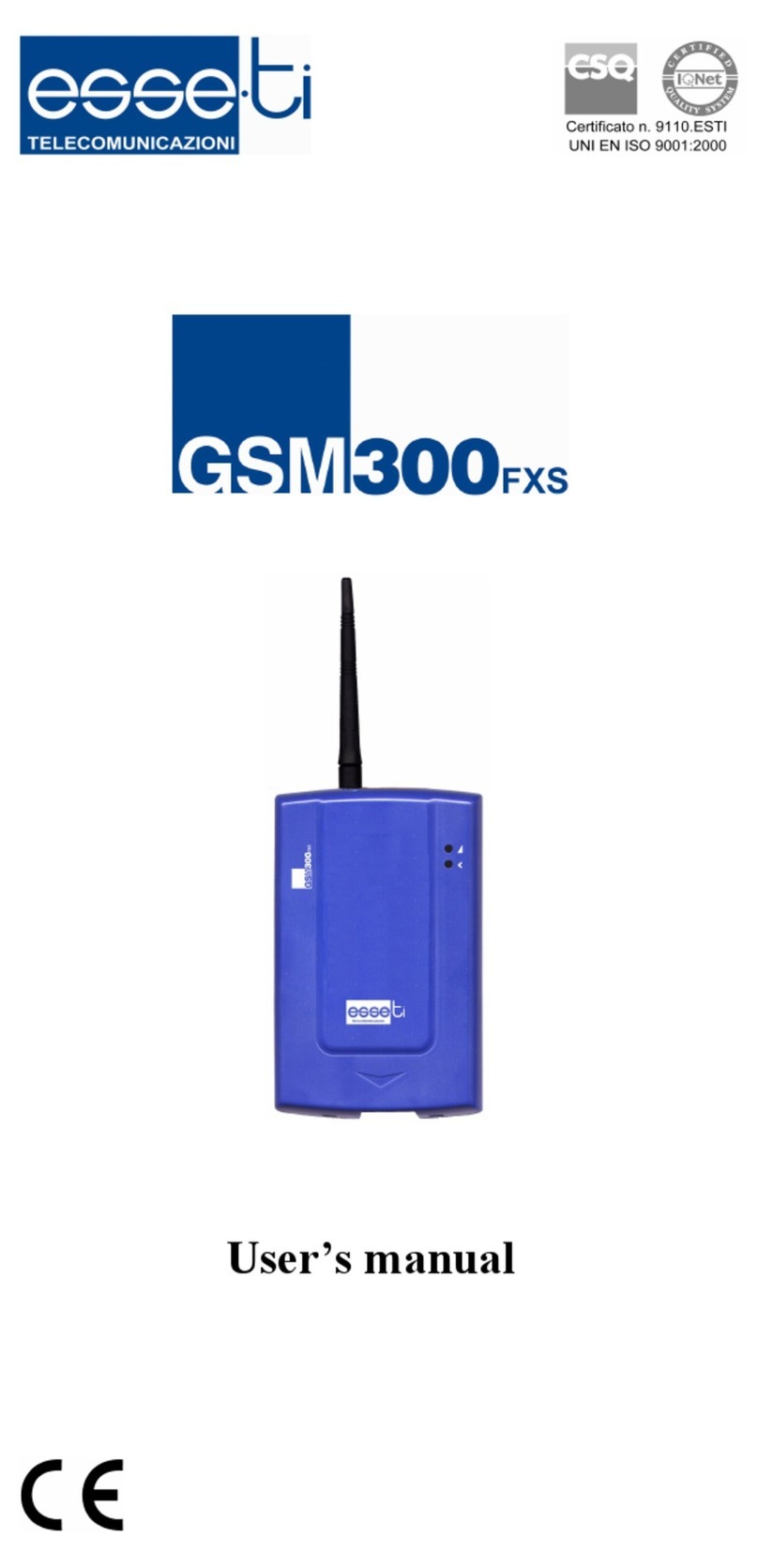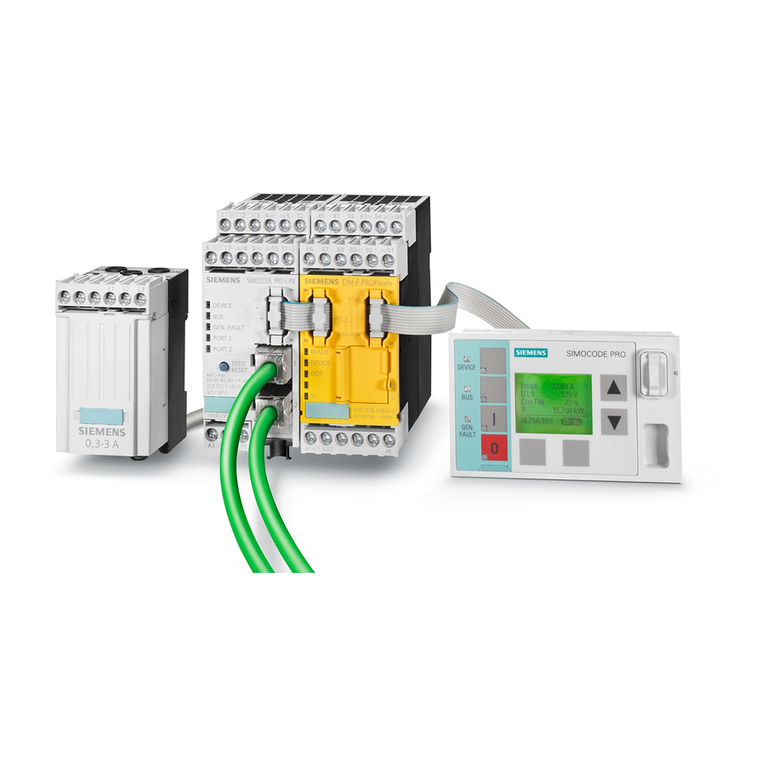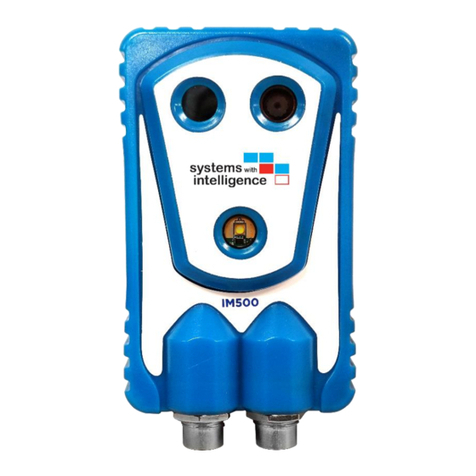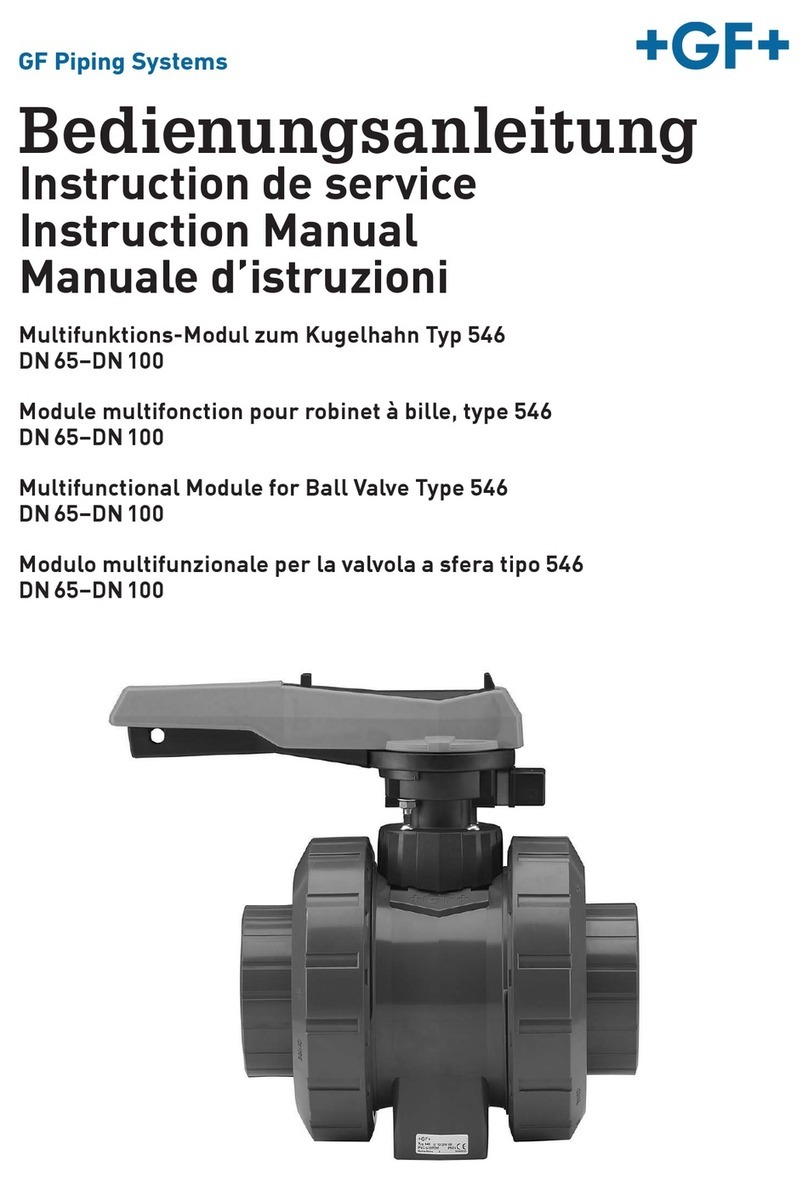Aentron AEC900500R User manual

aentron Energy Storage System
AEC900500R - aentron Energy Controller
A48100F - aentron Lithium-Ion Module
A24100F - aentron Lithium-Ion Module
12 to 900 V DC
Version 1.3
Operating Manual
English
English

Table of Contents
aentron GmbH aentron energy storage system Page 1/100
Version 1.03
Table of Contents
1. Introduction ............................................................................... 4
1.1. General ....................................................................................... 4
1.2. Terminology ................................................................................ 5
1.3. Explanation of Symbols .............................................................. 6
1.3.1. Structure of the Safety Instructions ............................................ 6
1.3.2. Symbols, Warning Signs and Mandatory Signs ......................... 6
1.3.3. Abbreviations .............................................................................. 7
1.4. Labelling ..................................................................................... 9
1.5. Contact Address ....................................................................... 10
2. Basic Information About the System Structure .................. 11
2.1. System Components ................................................................ 11
2.2. HV System Requirements ........................................................ 11
2.3. System Architecture ................................................................. 17
2.4. Specification of the aentron Energy Storage System............... 18
3. About the aentron Energy Storage System ......................... 22
3.1. Using the aentron Energy Storage System .............................. 22
3.1.1. Intended Use ............................................................................ 22
3.1.2. Foreseeable Misuse ................................................................. 22
3.2. Technical Data.......................................................................... 23
3.2.1. Dimensions ............................................................................... 23
3.2.2. Electrical Specification ............................................................. 25
3.2.3. Additional Specifications .......................................................... 25
3.2.4. Ambient Conditions .................................................................. 26
3.2.5. Power Consumption ................................................................. 26
3.3. Scope of Delivery ..................................................................... 27
3.3.1. Versions of the aentron Energy Storage System ..................... 29
4. Safety ....................................................................................... 30
4.1. Basic Functional Safety ............................................................ 30
4.2. Obligations of the Operating Company .................................... 31
4.3. Obligations of the Personnel .................................................... 32
4.3.1. Training of personnel ................................................................ 32
4.4. Warnings of a General Nature .................................................. 33
4.5. Thermal Hazards ...................................................................... 34
4.6. Electrical Hazards .................................................................... 34
4.7. Dangers Caused by Materials and Substances ....................... 34
4.8. Safety Equipment ..................................................................... 35
5. Preparation for Use ................................................................ 36
5.1. Layout and Controls ................................................................. 36

Table of Contents
aentron GmbH aentron Energy Storage System Page 2/100
Version 1.03
5.2. Interfaces External Systems ..................................................... 38
5.3. Transport and Storage ............................................................. 40
5.3.1. Unpacking ................................................................................. 41
5.4. Installation ................................................................................ 42
5.4.1. Installation Site of the aentron Energy Storage System .......... 42
5.4.2. Electrical Connection ................................................................ 43
5.4.3. Switching On, Functions and CAN Bus .................................... 46
5.4.4. Checking the Functions ............................................................ 49
5.4.5. System Check with the CAN bus Diagnostic System .............. 50
5.5. Commissioning and Self-Diagnostic......................................... 50
5.5.1. Setting Up the aentron Battery Interface (ABI) ......................... 51
6. Operation the aentron Energy Storage System .................. 63
6.1. General ..................................................................................... 63
6.2. Operating Modes ...................................................................... 63
6.2.1. Parallel Connection .................................................................. 64
6.2.2. Serial Connection ..................................................................... 65
6.3. Use ........................................................................................... 66
6.3.1. Use Examples .......................................................................... 66
6.3.2. Charging ................................................................................... 69
6.3.3. Charging Method ...................................................................... 70
6.3.4. Charge Equalisation ................................................................. 70
6.3.5. Saving Power ........................................................................... 70
7. Maintenance ............................................................................ 71
7.1. Maintenance Guidelines for aentron Energy Storage System . 71
7.2. Preventing Deep Discharging ................................................... 71
7.3. Operating Lifetime .................................................................... 72
7.4. Cycle Lifetime ........................................................................... 73
7.5. Servicing and Repairs .............................................................. 73
7.5.1. Packaging ................................................................................. 73
7.5.2. Dangerous Goods Labelling on the Shipping Package ........... 75
7.5.3. Transport Operator ................................................................... 75
8. Cleaning and Battery Care .................................................... 76
8.1. Cleaning ................................................................................... 76
8.2. Battery Care ............................................................................. 76
9. Decommissioning and Disposal ........................................... 77
9.1. Decommissioning ..................................................................... 77
9.2. Storage ..................................................................................... 78
9.3. Winter Storage.......................................................................... 79
9.3.1. Long-Term Storage .................................................................. 80
9.4. Disposal and Recycling ............................................................ 80

Table of Contents
Page 3/100 aentron Energy Storage System aentron GmbH
Version 1.03
10. Faults and Notifications ......................................................... 81
10.1. Troubleshooting ........................................................................ 81
10.2. Emergencies ............................................................................. 83
10.3. Frequently Asked Questions (FAQ) ......................................... 83
11. Legal Information ................................................................... 86
11.1. Warranty Conditions ................................................................. 86
11.2. Copyright and Property Rights ................................................. 86
11.3. Material and Legal Defects ....................................................... 87
11.4. Approvals and EU Declaration of Conformity ........................... 87
11.5. EMC .......................................................................................... 89
12. Schedules ................................................................................ 90
12.1. Maintenance Schedule ............................................................. 90
12.2. Maintenance Protocol ............................................................... 91
13. Appendix ................................................................................. 97
13.1. Index ......................................................................................... 97

Introduction
General
aentron GmbH aentron Energy Storage System Page 4/100
Version 1.03
1. Introduction
1.1. General
This operating manual enables the safe and efficient handling of the aentron
energy storage system and describes all the essential functions.
This operating manual ensures the safe operation of the aentron energy storage
system in accordance with the intended use.
This document contains:
■ Description of the design, functions and features of the aentron energy
storage system
■ Notes on possible dangers, their consequences and on measures for
hazard prevention
■ Detailed specifications on the standard operation of the aentron energy
storage system.
The operating manual is part of the aentron energy storage system and must be
stored away safely for users to be able to access at any time. Please read the
operating manual carefully before placing the aentron energy storage system
into operation. For the safe and efficient use, all the safety instructions and
handling instructions of this operating manual must be read and understood.
In this operating manual, the latest version of the aentron energy storage system
is described. If changes or supplements are required in the future, the operating
manual is amended, and all amendments are included in the next revision.
The respective version of the operating manual is displayed on the cover sheet
and in the footer; this operating manual is version "1.0". The version will be
increased by "1" with every revision.
aentron GmbH reserves the right to make changes to systems and
documentation without notifying users of previous versions.
TIP
If the aentron energy storage system is passed or sold on to third
parties, the following documents must be passed on to the new user:
This operating manual
Documentation of repair work carried out.

Introduction
Terminology
Page 5/100 aentron Energy Storage System aentron GmbH
Version 1.03
1.2. Terminology
Cell
The cell is the smallest part of an electrochemical storage system and stores the
chemical energy.
Module
A grouping of multiple cells or cell blocks, fitted with a battery management
system.
Battery
A battery refers to when several lithium-ion module are connected in parallel or in
series.
Battery system
If several lithium-ion module are connected in parallel or in series and are
controlled by an energy controller, this is referred to as a battery system.
Safety voltage (DIN ISO 16315:2016 - Small craft - Electrical drive systems)
The safety voltage must not exceed 50 Vdc.
Grounding (GND)
The ground is connected in such a way that an immediate and safe discharge of
the electrical energy is always guaranteed.
Fuse
Opens the circuit when the current has exceeded a specific value for a certain
time.
Circuit breaker
Is a mechanical switching device which can carry and interrupt currents.
Protective conductor (PE)
A conductor intended for safety purposes (e.g. protection against electric shock).
Disconnector
A disconnector is a mechanical switching device that provides a separation
distance in the open position according to the specified requirements.

Introduction
Explanation of Symbols
aentron GmbH aentron Energy Storage System Page 6/100
Version 1.03
1.3. Explanation of Symbols
1.3.1. Structure of the Safety Instructions
The safety instructions in this document are presented with a standardised
format and symbols. Depending on the probability of occurrence and the severity
of the consequences, the following hazard classes are used:
DANGER
Indicates a hazardous situation which could lead to serious
physical injury or death.
Measures for preventing the hazard
NOTICE
Indicates a situation that could lead to property damage.
Measure for preventing the property damage
TIP
Application tips and particularly useful information
1.3.2. Symbols, Warning Signs and Mandatory Signs
Warning of a hazard point
Warning of electrical voltage
Warning of corrosive substances
Warning of a fire hazard
Application tips and other useful information
Use protective gloves
Use eye protection

Introduction
Explanation of Symbols
Page 7/100 aentron Energy Storage System aentron GmbH
Version 1.03
Symbols on the components of the aentron Energy Storage System
Pay attention to the manual
Not for disposal with domestic waste
CE mark
ECE R10 mark
UN38.3 mark
1.3.3. Abbreviations
Abbreviation Meaning
+L: Charger PIN
AES aentron Energy System
AEC aentron Energy Controller
AEM aentron Energy Module
APR: Average Power Rating
BLK: Black
BMS: Battery Management System
CAN: Control Area Network
CCCV: Constant Current, Constant Voltage
Cp: Capacity
C-Rate: Charge (Capacity Current) Rate per Hour
DoD: Depth of Discharge
EDO: Every Day Operation
EMC: Electro Magnetic Compatibility
EN: Engineering Norm
EoL: End of Life
EOS: End of Service
E-Switch: Electronic Switch
GND: Chassis Ground
H: High
I: Current
IP: Ingress Protection - Rating
iR: Internal Resistance
L: Low

Introduction
aentron GmbH aentron Energy Storage System Page 8/100
Version 1.03
Abbreviation Meaning
Li-ion: Lithium Ion
MMS: Module Management System
NTC: Negative Thermal Couple
OCV: Open Circuit Voltage
P: Power
PPR: Peak Power Rating
RTC: Real Time Clock
SoC: State of Charge
SoH: State of Health
SOP: Standard Operating Procedure
SR: Safety Related
t: Time
T: Temperature
TBD: To Be Defined
U: Voltage
UV: Ultra Violet

Introduction
Labelling
Page 9/100 aentron Energy Storage System aentron GmbH
Version 1.03
1.4. Labelling
Every energy controller and every lithium-ion module from aentron GmbH is
fitted with a type plate. This is located on the top of the energy controller or on
the front of the lithium-ion module.
Figure 1: Type plate Energy Controller (example)
1 Type name
2 Voltage, Capacity, Energy
3 Safe operating voltage, operating temperatures
4 Part number
5 CAN node ID number
6 Date of manufacture
7 Serial number
8 Contact details

Introduction
Contact Address
aentron GmbH aentron Energy Storage System Page 10/100
Version 1.03
Figure 2: Type plate Lithium-Ion Module 10 kWh Type F (example)
1 Type name
2 Voltage, Capacity, Energy
3 Safe operating voltage, operating temperatures
4 Battery identification according to EN 62620:2015
5 Part number
6 CAN node ID number for 01T = Terminator
7 Date of manufacture
8 Serial number
9 Contact details
1.5. Contact Address
aentron GmbH - Energy Solutions
Dornierstraße 21
82205 Gilching
GERMANY
Phone: +49 8105 398 98-0
Fax: +49 8105 398 98-29
www.aentron.com
info@aentron.com

Basic Information About the System Structure
System Components
Page 11/100 aentron Energy Storage System aentron GmbH
Version 1.03
2. Basic Information About the System Structure
2.1. System Components
Designation aentron ID
AEC900500R - energy controller (12 - 900 Vdc) AEN01500 / AEN01501 /
AEN01502 / AEN01503
A48100F - lithium-ion module
(48 Vdc / 10 kWh / 203 Ah module)
AEN00098
A24100F - lithium-ion module
(24 Vdc / 10 kWh / 406 Ah module)
AEN00727
Busbar 4/8-pin SAEN00411 / SAEN00415
Busbar and busbar protection box SAEN00564
CAN bus communication cable (optional) SAEN01000 / SAEN01001 /
SAEN01003
120 Ohm Terminator SAEN00927
2.2. HV System Requirements
Observe the following requirements for the safe integration and operation of the
energy storage system.
Electrical design
Make sure that the installation personnel are familiar with all aspects of the
equipment so that the drive system components can be integrated into the
aentron energy storage system in a consistent and safe manner.
Rating:
During installation, ensure that
■ the rated power of each electrical load component is matched to the load
requirements.
■ the aentron energy storage system can be electrically separated from other
electrical systems.
■ AC systems (e.g. chargers) are grounded to a neutral conductor.
■ DC systems are either grounded or fully insulated.
Please note the special requirements for insulation resistance.

Basic Information About the System Structure
gg System Requirements
aentron GmbH aentron Energy Storage System Page 12/100
Version 1.03
■ a three-wire system (e.g. DC +48 V / 0 / -48 V) with a grounded neutral
conductor is used for DC drives operating at voltages above the safety
voltage (< 50 Vdc) to limit the prospective contact voltage.
■ precautions against the risk of electrical shock are observed in DC
applications and other electrical installations with rated voltages above the
safety voltage.
Safety recommendations
DC applications may have one or more large capacity batteries as the main
power source.
Please observe the following points in particular:
■ Cooling requirement for battery bank or battery compartment;
■ Requirements for an overcurrent device and a disconnector for each drive
battery bank or each battery pack;
■ Circuit protection requirements for permanently live circuits powered by a
battery bank or battery pack.
The electrical drive circuits must be designed to protect against the following
hazards:
■ Fire: Protection through overcurrent protection, grounding, terminal
protection as well as conductor type and conductor size
■ Shock: Protection through housing, conductor and terminal insulation,
automatic shutdown and
■ Protection of the grounding system.
Insulation and grounding (GND)
DC applications must be insulated accordingly. Other equipment and circuits
must be connected directly to the common direct current source(s) and must
also be fully insulated. Every connected electrical equipment or circuit must be
equipped with an overcurrent / fault protection device.
Integrated electrical and electronic devices other than the aentron energy
storage system must operate under the normal voltage and frequency variations
that may occur during normal operation of the electric drive system. This also
includes short-term overloads caused by the startup of the drive system.

Basic Information About the System Structure
gg System Requirements
Page 13/100 aentron Energy Storage System aentron GmbH
Version 1.03
DC systems must be designed for operation within the following limit values:
■ The nominal DC voltage tolerance of the terminals (for all DC devices) is -
25% to + 33%
■ When using chargers / battery combinations as DC systems, appropriate
measures must be taken to keep the charging voltage within the specified
limits during charging, fast charging and also when discharging the battery.
■ Observe the limit values of the aentron energy storage system, see chapter
3.2 Technical Data.
Notes on electrical installation
■ Mark all cables and conductors with a label (cables, multi-core cables,
single-core cables).
■ Mark all conductors > 50 Vdc orange or otherwise as > 50 Vdc and ensure
that they have the correct polarity.
■ Conductors for DC and AC drives and other electrical distribution systems
connected to a common source must be selected in accordance with
IEC 60092-352.
■ The drive system conductors must be installed in piping or ducts, on special
circuit boards or by clamps or other methods directly on surfaces in
accordance with IEC 60092-352. Please observe the requirements of
ISO 10133 and ISO 13297.
■ During and after installation, check that all protective conductors and
connections which connect conductive parts to the protective conductor are
functioning correctly.
The value of the earth resistance may not exceed 1.0 Ω.
All aentron energy storage systems are supplied according to the above
requirements.
Overcurrent protection
Each drive system must be protected against overload by circuit breakers or
fuses. The circuit breakers must be selected in accordance with IEC 60947 or
IEC 60898-1. Each fuse or circuit breaker at the source of a circuit must be
designed to protect the conductor with the smallest cross-section in the circuit
which is to be protected.
The output circuit of the aentron energy storage system must be protected by a
fuse with a fault current determined by the maximum short-circuit current.
The fuse must be as close as possible and within 1.8 m of the battery output
terminals measured at the conductors.

Basic Information About the System Structure
gg System Requirements
aentron GmbH aentron Energy Storage System Page 14/100
Version 1.03
Battery system / circuit breaker insulation
aentron GmbH provides an easily accessible disconnector for each lithium-ion
module, which can be disconnected from the DC mains.
In addition, you should install an additional mechanical disconnector / circuit
breaker directly next to the battery compartment and downstream of the aentron
energy controller. A two-pin disconnector should be placed as close as possible
to the battery output terminals (AEC) and be within 1.8 m of the conductor.
Converter: DC/DC / AC/DC
Connected converters must comply with the requirements of IEC 60146. The
converters must be installed according to the instructions of the component
manufacturer.
Housing
Protect current-carrying parts of electrical equipment against accidental contact
by means of housings.
Areas and facilities (> 50 Vdc) which could endanger the safety of persons (e.g.
battery compartments, electrical components) may only be accessible with tools
or keys and must be marked in accordance with the danger they pose.
Live parts must be protected against unintended contact, e.g. by means of fuses,
busbars, disconnectors, terminals, cable interfaces or by housing or basic
insulation which can only be bypassed through their destruction. aentron GmbH
offers a protection class of at least IP4X.
All aentron components and the connection of external components must
comply with a minimum insulation resistance of 1,000 Ω/V for DC components
and 1,000 Ω/V for AC components.
Control system, monitoring, system warnings
Control systems must control and limit the flow of energy to prevent damage
between the battery and/or the power sources and the system in both directions.
This requirement must be implemented in addition to regular system protection.
Make sure that the on/off control can be locked in the "off" position.
Emergency stop / aentron service shutdown
The "Emergency stop" switch must "lock" when actuated and must be resettable
manually. The "service disconnector" of the energy controller serves as an
emergency stop switch and is thus permanently connected to the internal
electrical system (12 V / 24 Vdc) of the aentron energy storage system.

Basic Information About the System Structure
gg System Requirements
Page 15/100 aentron Energy Storage System aentron GmbH
Version 1.03
Mechanical installation:
During operation, the aentron energy storage system must be secured against
movement and protected against impact and falling objects by means of the
supplied mounting rails.
Permanently live circuits
The following systems can be connected after the disconnector and the battery
pack or battery bank connections:
■ Electronic devices with protected storage and protective devices must be
individually protected by a circuit breaker or fuse as close as possible to the
battery terminals;
■ Chargers which are connected to the aentron power lines and left
unattended (e.g. solar cells, wind generators) must be individually protected
by one or more fuses or circuit breakers as close as possible to the battery
terminals.
Battery ventilation and protection class
The aentron energy storage system does not require ventilation under normal
operating conditions to prevent the formation of explosive gases.
Enclosures should be air-cooled naturally with a sufficient number of ventilation
holes or sufficient cooling surface to dissipate heat, so that the enclosed devices
can operate within the temperature limits of the aentron energy storage system.
Ventilation by general cooling is recommended to ensure that the operating
temperature remains between 0 °C and +30 °C to maximise the operating life.
The aentron energy storage system does not have any special requirements to
prevent the battery from leaking.
All aentron energy storage systems have a protection class of IP66 or higher.
The lithium-ion cell technology used by aentron GmbH is a dry cell technology
that does not leak during normal operation.
In the unlikely event of escaping gas due to cell leakages, the aentron battery
housing catches all leaking fluids in a designated area.
Load test and testing of electrical components (rating test):
During and after integration, all consumers should be placed as close as
possible to the load to avoid significant voltage drops > 10 m.
During and after the integration, check all consumers on whether the maximum
normal operating load causes overheating, the maximum rated power is
exceeded or whether the safety equipment of the batteries is damaged.
This serves to ensure that there are no faulty connections or incorrect rating
data.

Basic Information About the System Structure
gg System Requirements
aentron GmbH aentron Energy Storage System Page 16/100
Version 1.03
Switches, circuit breakers and control systems must be operated under load to
verify their suitability and to demonstrate that the operation of over-voltage,
under-voltage and reverse-current or reverse-power protection devices is
electrically and mechanically satisfactory.
System alarms / error messages
The installer should preset the following system messages and error messages
for the operating company to ensure reliable and safe operation. These are
available as standard via the aentron energy storage system's CAN bus.
1) Battery temperature (°C)
2) Low battery charge (%)
3) Battery voltage (V)
4) Battery current (A)
5) Battery output (kW)
6) Remaining battery life (min)
7) Insulation resistance, faults (IR) (for fully insulated DC systems)
8) Warnings (low/high voltage, under/over temperature, faults)
The aentron GmbH offers various instrumentation alternatives. Contact your
authorised aentron dealer for more information.

Basic Information About the System Structure
System Arcgitecture
Page 17/100 aentron Energy Storage System aentron GmbH
Version 1.03
2.3. System Architecture
Figure 3: System architecture – Example
The aentron energy storage system is divided into the following three levels:
Level 1: AES – Electrical Energy Storage
aentron GmbH defines the overall aentron energy storage system as an Electric
Energy Storage (EES) This includes all cells, the entire E/E hardware and
software as well as the mechanical components.
Level 2: AEC - HV Energy Controller (12 - 900 Vdc)
aentron GmbH defines the energy controller as an E/E component that
communicates with the customer application via an OPEN CAN bus. The energy
controller controls and monitors the modules via an OPEN CAN bus
(Daisy Chain) communication network.
Level 3: AEM - MMS (Module Management System)
aentron GmbH defines the MMS as an E/E component which is connected to
the energy controller via a CAN communication network. The MMS controls and
monitors all important functions of the module and the cells.

Basic Information About the System Structure
Specification of the aentron Energy Storage System
aentron GmbH aentron Energy Storage System Page 18/100
Version 1.03
2.4. Specification of the aentron Energy Storage System
The aentron energy storage system enables the implementation of a modular
and scalable battery solution. The management of the aentron energy storage
system consists of two essential standard components:
■ aentron energy controller (AEC)
■ module management system (MMS)
All lithium-ion modules can be combined with each other and used as a single
product or in conjunction with products from other manufacturers.
Documentation for our products is available on request. All energy storage
systems are conforming to standards and can be used for the following
applications:
■ E-mobility
■ E-maritime
■ E-industry
■ E-building
Figure 4: System architecture – BMS functions

Basic Information About the System Structure
Specification of the aentron Energy Storage System
Page 19/100 aentron Energy Storage System aentron GmbH
Version 1.03
Main functions
The following comprehensive safety and control functions for managing a
modular energy storage device are implemented:
■ Communication interfaces: CAN bus / USB
■ Data logging with real time clock
■ System internal firmware updates via CAN bus or USB
■ Monitoring of up to 25 lithium-ion modules per controller unit
■ Relay control
■ Heating and cooling controls (optional on request)
■ Series and parallel string control
■ SoC and SoH calculation
■ Independent hardware security layer
■ Operating temperature range energy controller (-40°C to +80°C)
■ IP class: IP66
■ Redundant power supply DC out 12 V / 25 W
■ Insulation monitoring
■ Highly efficient internal 12/24 Vdc power supply
■ Active power consumption 100 - 600 mW
■ Power consumption shutdown 0 mW
Interfaces:
■ CANopen bus communication (standard 250 kbit/s, 11-bit ID) (ISO 11898)
Provides access to all relevant system information and
parameter changes
Allows communication between energy controller and the
customer application
Facilitates establishing control circuits for charging and/or
discharging
Receives firmware updates via USB 1.1 to 3.0
■ Galvanically isolated up to 1,000 Vdc
This manual suits for next models
2
Table of contents
Popular Control Unit manuals by other brands

Mutable Instruments
Mutable Instruments Blades user manual
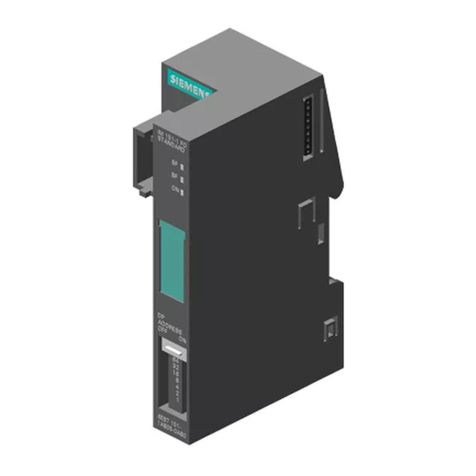
Siemens
Siemens SIMATIC ET 200S IM151-1 FO STANDARD manual

Viessmann
Viessmann EM-P1 Installation and service instructions for contractors

schmersal
schmersal SRB 301AN operating instructions
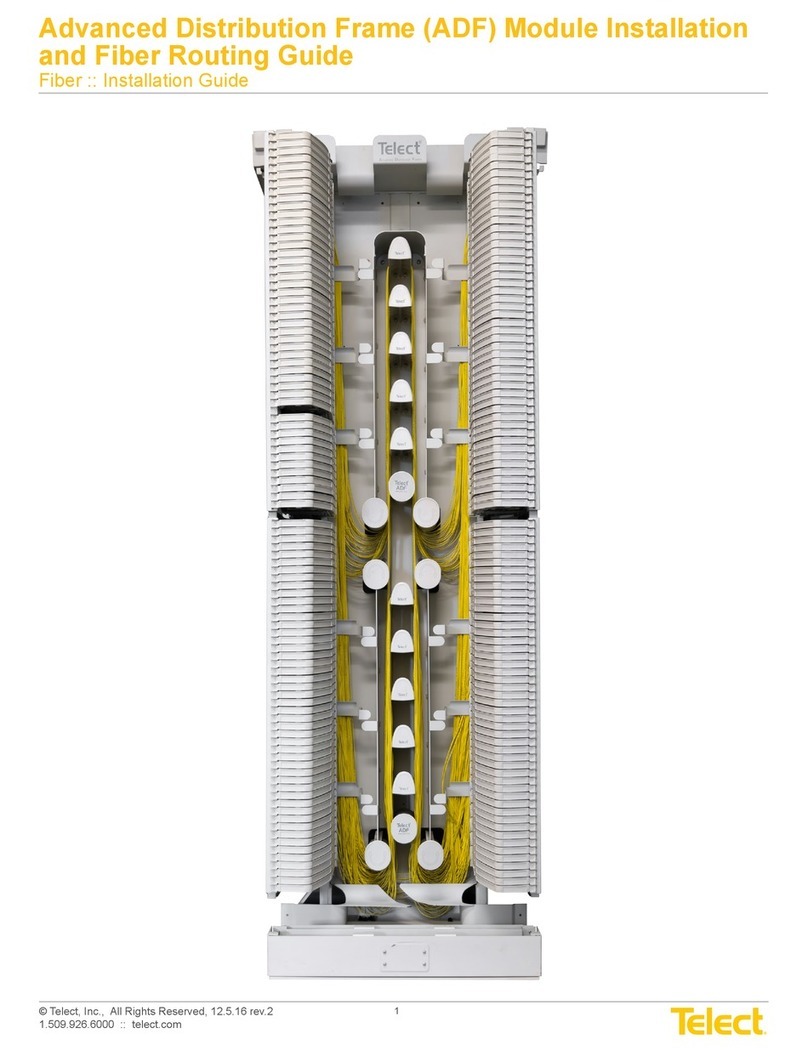
Telect
Telect ADF installation guide
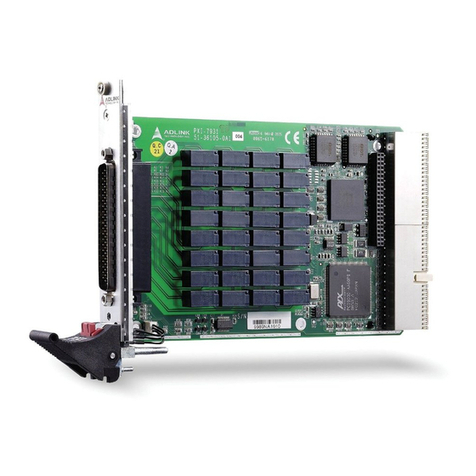
ADLINK Technology
ADLINK Technology PXI-7931 user manual
